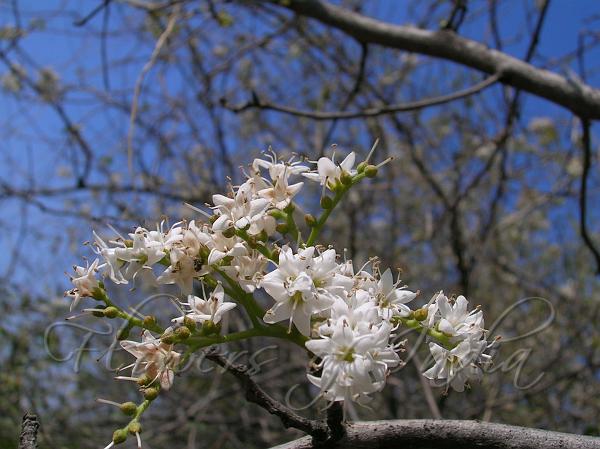|
| Chamror |
|

|

| File size | 654908 |
| Original date | 3/19/06 2:51 PM |
| Resolution | 2048 x 1536 |
| Flash | Flash did not fire, auto |
| Focal length | 8.0mm |
| Exposure time | 1/712s |
| Aperture | 5.5 |
| Focus Distance | |
| Metering Mode | Partial |
| Camera make | NIKON |
| Camera model | E3700 |
| Sensor type |
|
|
|
Photo: |
Botanical name: Ehretia aspera Family: Boraginaceae (Forget-me-not family)
Synonyms: Ehretia laevis, Ehretia punctata, Ehretia heynei
Synonyms: Ehretia laevis, Ehretia punctata, Ehretia heynei
Chamror is a fast-growing, small to medium sized
tree up to 9 m tall. Young shoots and branches are finely velvet-hairy to
becoming hairless. Leaves are 8-15 x 4.5-1.5 cm, elliptic to nearly round,
blunt to pointed, base rounded to wedge-shaped or oblique. Leaf-stalks are
long. Flowers are white, borne in cymes in leaf-axils and at branch-ends,
Flowers are about 5 mm long. Petals ovate-lanceshaped, about 3 mm long,
spreading. Filaments about length of flower, hairless, lower half adnate;
anthers 1.5 mm long. Styles 2-3 mm long, Stigma head-like.
Sepal-cup is 1.5 mm long, 5-partite, minutely
rusty-velvet-hairy. Sepals about 1 mm long, ovate, pointed.
Drupes are yellow or orange, 3-4 mm in diameter. Chamror is found in
Pakistan to India, Himalaya and SE Asia.
Medicinal uses: The leaves, fruit and root extract is used in the treatment of chest
infections. Bark paste is applied as an ointment for cuts and wounds
The leaves, fruit and root extract is used in the treatment of chest
infections. Bark paste is applied as an ointment for cuts and wounds
Medicinal uses:
 The leaves, fruit and root extract is used in the treatment of chest
infections. Bark paste is applied as an ointment for cuts and wounds
The leaves, fruit and root extract is used in the treatment of chest
infections. Bark paste is applied as an ointment for cuts and wounds
| Identification credit: Navendu Pagé | Photographed in Delhi. |
• Is this flower misidentified? If yes,